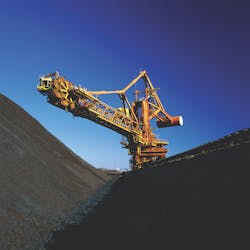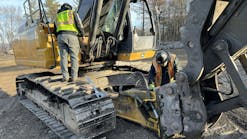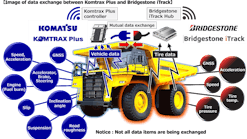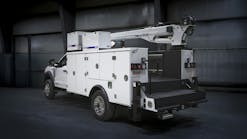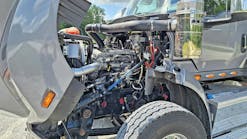8 Essential Questions to Start a Reliability Improvement Program
Preparing for a reliability-centered maintenance (RCM) improvement program requires a well-defined process and team-based approach.
The foundation of any improvement program is the business assessment (what needs to be done and why) and the requirements and strategies (who will do it and how).
Once this is determined, you’re ready to begin effective planning and development of all the resources necessary to accomplish your foundational requirements, people processes, tools, spares, and technology and maintenance program. Your Enterprise Management Systems can help you manage, control, and measure the effectiveness of all your resources.
As you prepare for asset maintenance in your organization for 2019, consider these eight steps to help you improve reliability, reduce risk, and lower the cost of owning and operating physical assets.
1. What are your challenges and opportunities in 2019?
Every organization has its own challenges and opportunities—whether related to customer service, competition, market share, technology, resilience, aging infrastructure, skills and labor, demographics or some combination of all of them. The first step to confront challenges is to identify them and fully understand their impact on your business. A business review that starts with organizational objectives (safety, environmental integrity, and operational capability) and aligns these objectives with international standards for physical asset management and risk management is an effective way to determine areas of concern and opportunities for improvement.
2. How do you deal with challenges and opportunities?
Once you determine your organization’s challenges, associated risks and opportunities, assess exactly what level of risk these pose (physical or operational) and how the maintenance organization (the people, the processes, the technology and the physical assets) would best stand up to these challenges and embrace the opportunities. Identifying gaps will help you manage risks in a proactive way and perhaps even avoid them completely.
Basson is the owner/operator of Aladon, providers of methodologies and training software for RCM-based practices.
3. Which risks pose the biggest threat?
Whether it is organizational culture, lack of skilled labor, state of repair of critical assets, or gaps in deployed technology that poses the biggest threat or opportunity—your business cannot proactively manage risks without understanding how they affect continued safe and effective operations. For example, the biggest threat used to be centered on human capital, but the latest surveys show that more senior executives are concerned about technology and the IoT. How to best address the requirements and opportunities Industry 4.0 brings is now one of executives’ top concerns. It is also true that not all equipment is made equal. With regards to asset management, understanding the relative risk and asset priority will provide the focus you need to address the important issues first.
4. Which strategy fits your business best?
Once you identify your risks and prioritize them in relative terms, you’re ready to address them successfully, starting with the ones posing the biggest threat to your business objectives. It’s essential to develop a risk framework that fits your organization and is clearly defined for everyone in order to achieve the lowest tolerable risk at the most economical value. Managing your risks successfully requires the knowledge and understanding of the risk-management strategies associated with people, processes, technology, and physical assets that benefit your organization best.
5. How do you implement successful mitigating strategies?
Knowing what to do is useful, but knowing how to do it is essential. Whether managing your risks requires a culture change (building a culture of reliability), improving asset reliability and uptime, or adopting new asset care strategies and technology, implementing a well-documented, sustainable process provides the necessary change management required to be successful. Specialists in RCM methodologies are available to help. Select a partner with the necessary experience and expertise that shares your vision and values.
6. What to expect and how to manage expectations?
Essential to an effective maintenance plan for 2019 is managing employees’ expectations around what will it take (level of effort) and what will it bring in return (ROI). Improvement initiatives don’t always share common values and dealing with opposing priorities and even resistance to change can derail any good initiative. Set goals and manage expectations by tracking progress and performance through well-defined KPIs.
7. How do you implement and sustain your results?
Because many improvement programs never get implemented or fail during implementation, develop and plan an implementation strategy at the start. Your business processes and Enterprise Systems must be capable to support the improvement program. A wide scale implementation of an asset reliability improvement program such as reliability-centered maintenance may require additional software, not only to develop the strategies and capture the information (keep an audit trail), but also to ensure seamless implementation and sustainability of results. Without a well-documented process and the use of properly designed software (fit for purpose), employees will feel frustrated and the initiative will fail. Many times people will falsely blame the methodology or management for failed results.
8. How do you develop a continuous improvement program?
Once the results have been implemented, the feedback loop is critical for ensuring continuous review and improvement. Introduce additional steps or processes to evaluate and treat non-conformance and anomalies. The continuous improvement process will rely on timely and accurate feedback, and technology plays an important part in the successful management of asset health and performance. Determine what needs to be measured and controlled—the fact that feedback systems are becoming inexpensive does not mean that you need to measure everything possible.
